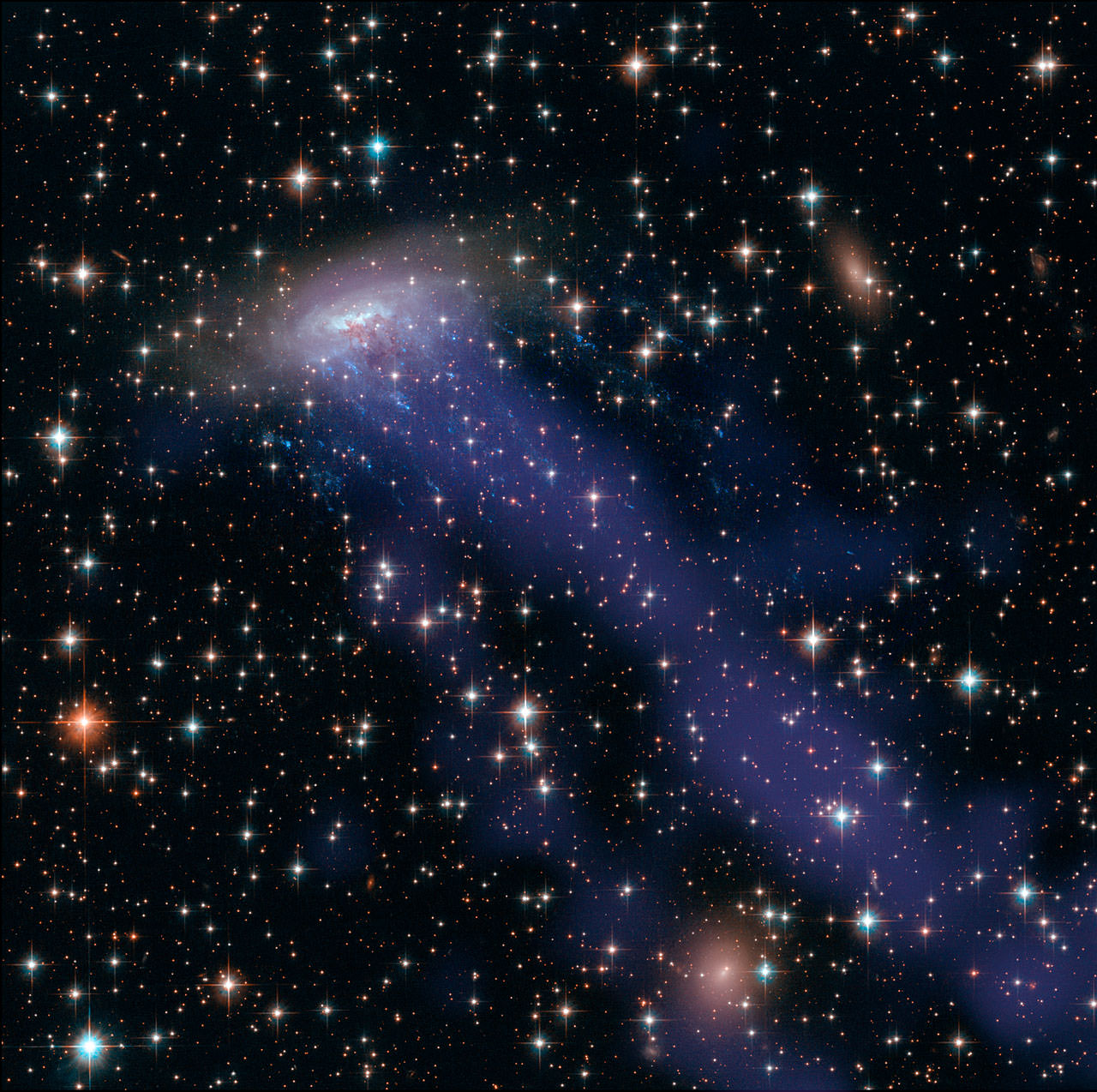

This image combines NASA/ESA Hubble Space Telescope observations with data from the Chandra X-ray Observatory. As well as the electric blue ram pressure stripping streaks seen emanating from ESO 137-001, a giant gas stream can be seen extending towards the bottom of the frame, only visible in the X-ray part of the spectrum. Credit: NASA, ESA, CXC
Some galaxies shine with a red ghostly glow. Once these galaxies stop forming new stars, they can only host long-lived stars with low masses and red optical colors. Astronomers often call these ghostly galaxies “red and dead.” But the basics behind why some form so quickly is still a mystery.
“It is one of the major tasks of modern astronomy to find out how and why galaxies in clusters evolve from blue to red over a very short period of time,” said lead author Michele Fumagalli from Durham University in a news release. “Catching a galaxy right when it switches from one to the other allows us to investigate how this happens.”
And that’s exactly what Fumagalli and colleagues did.
The team used ESO’s Multi Unit Spectroscopic Explorer (MUSE) instrument mounted on the 8-meter Very Large Telescope. With this instrument, astronomers collect 90,000 spectra every time they look at an object, allowing them to gain a detailed map of the object’s motion through space.
The target, ESO 137-001, is a spiral galaxy 200 million light-years away in the constellation better known as the Southern Triangle. But more importantly, it’s currently hurtling toward the Norma Cluster and embarking on a grand galactic collision.
ESO 137-001 is being stripped of most of its gas due to a process called ram-pressure stripping. As the galaxy falls into the galaxy cluster, it feels a headwind, much as a runner feels a wind on even the stillest day. At times this can compress the gas enough to spark star formation, but if it’s too intense then the gas is stripped away, leaving a galaxy that’s empty of the material needed to form new stars.
So the galaxy is in the midst of a brilliant transformation, changing from a blue gas-rich galaxy to a red gas-poor galaxy.
The observations show that the outskirts of the galaxy are already completely devoid of gas. Here the stars and matter are more thinly spread, and gravity has a relatively week hold over the gas. So it’s easier to push the gas away.
In fact, dragging behind the galaxy are 200,000 light-year-long streams of gas that have already been lost, making the galaxy look like a jellyfish trailing its tentacles through space. In these streamers, the gas is turbulent enough to compress small pockets of gas and therefore actually ignite star formation.
The center of the galaxy, however, is not yet devoid of gas because the gravitational pull is strong enough to hold out much longer. But it will only take time until all of the galactic gas is swept away, leaving ESO 137-001 red and dead.
Surprisingly the new MUSE observations show the gas trailing behind continues to rotate in the same way that the galaxy does. Furthermore, the rotation of stars at the center of the galaxy remains unhindered by the great fall.
Astronomers remain unsure why as this is only a snapshot of one galactic crash, but soon MUSE and other instruments will pry more out of the cosmic shadows.
The results will be published in the journal Monthly Notices of the Royal Astronomical Society and are available online.
If you were Captain of the first USS Enterprise, where would you go!? Humanity is…
Now is the best time to observe Mars in 2025. Mars from 2014. Credit: Paul…
Scheduled for launch in 2027, the Nancy Grace Roman Telescope is slowly being readied for…
Few places in the solar system are better suited to a balloon than Titan. The…
We reported before about a NIAC-funded project known as the Lofted Environment and Atmospheric Venues…
The InSight Lander arrived on Mars in 2018 to study the planet's interior. Its mission…